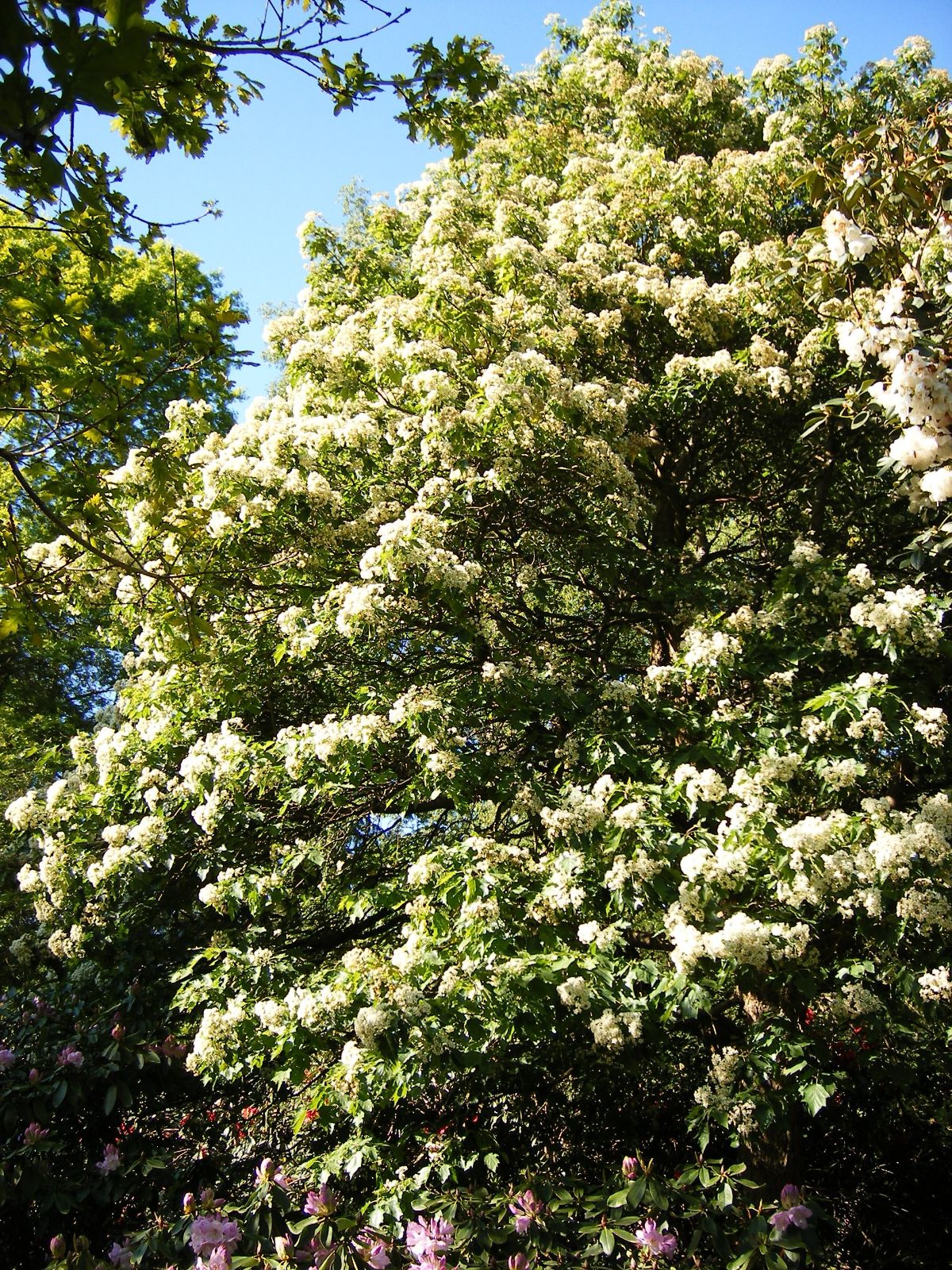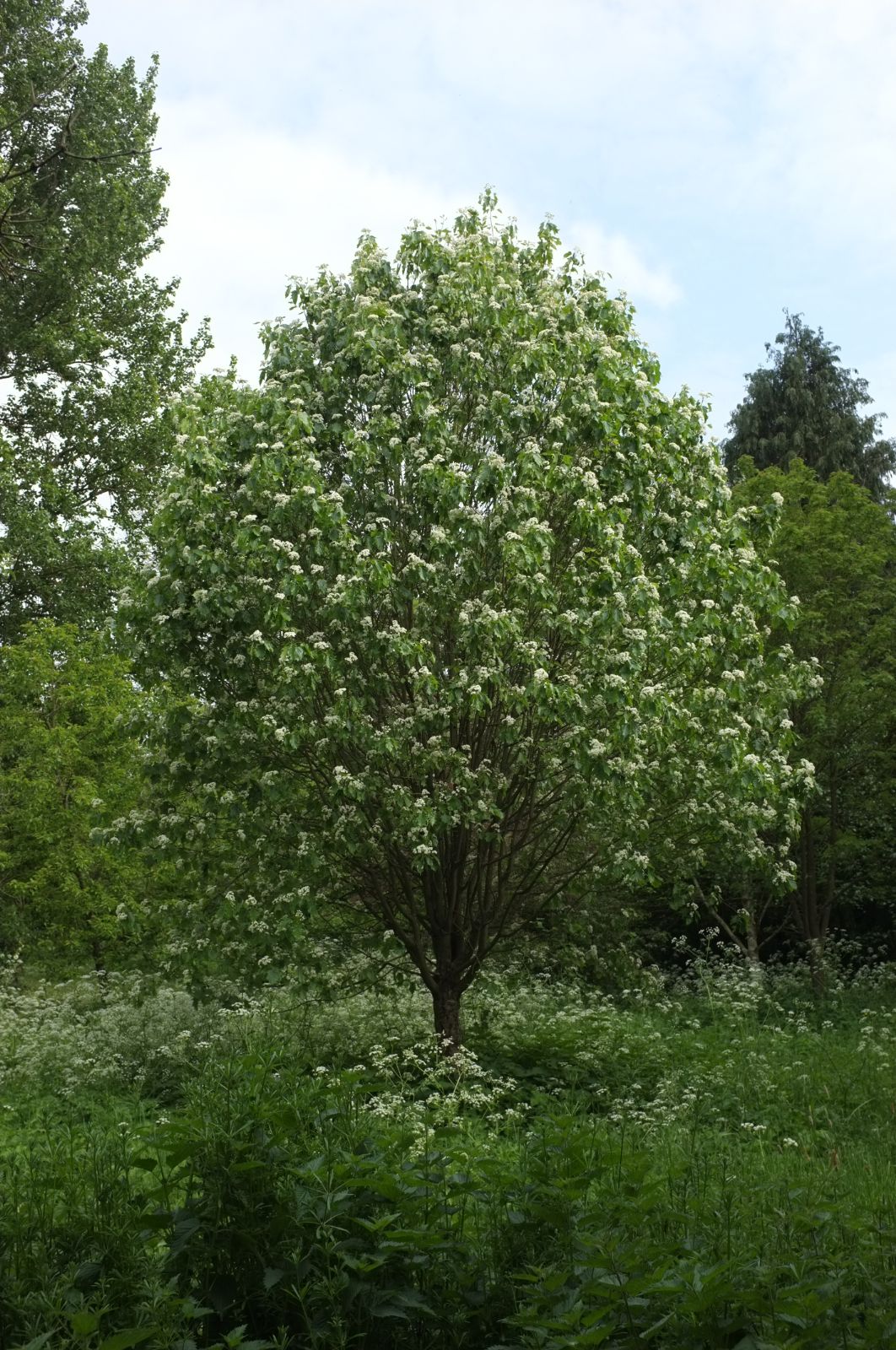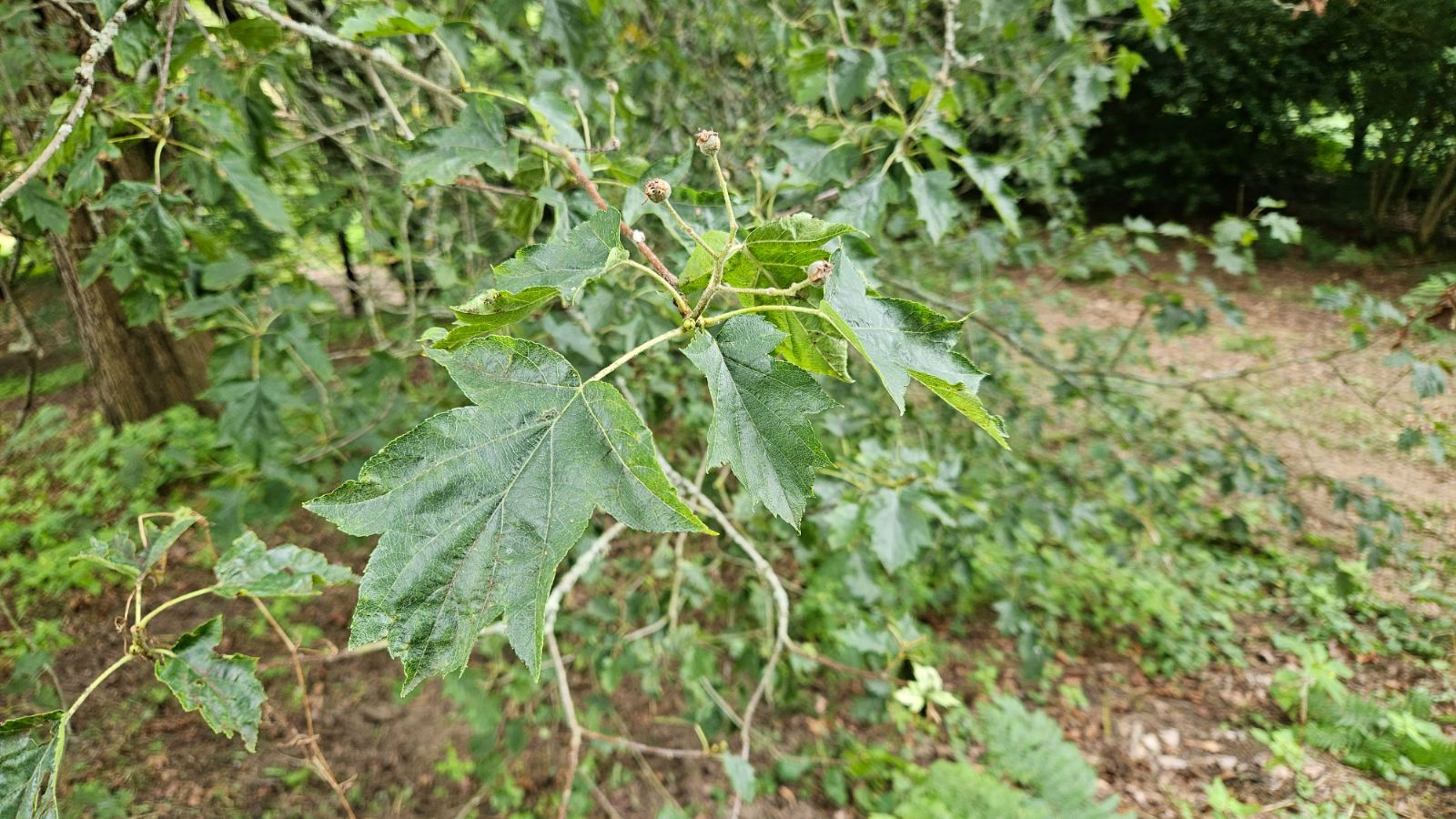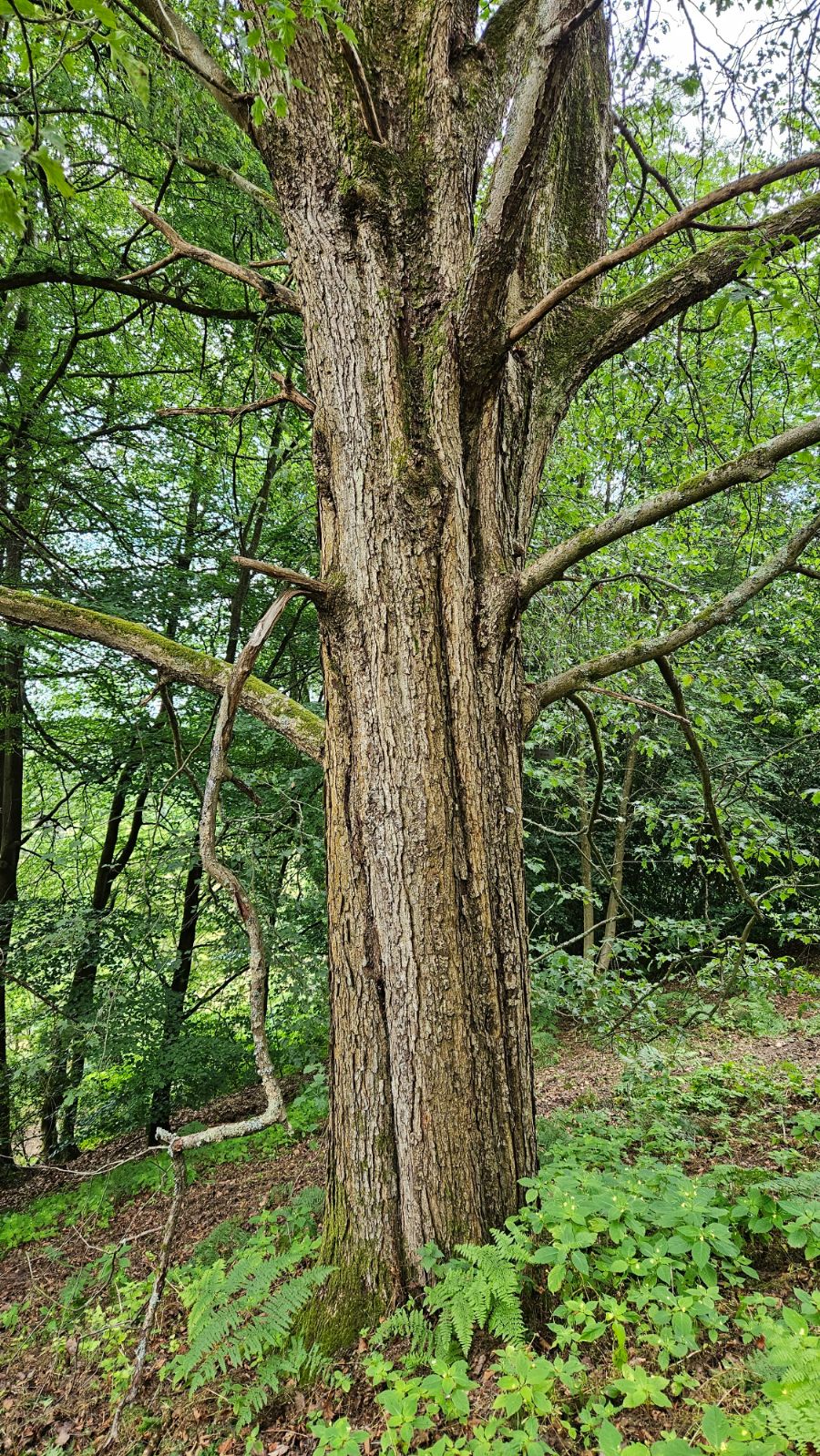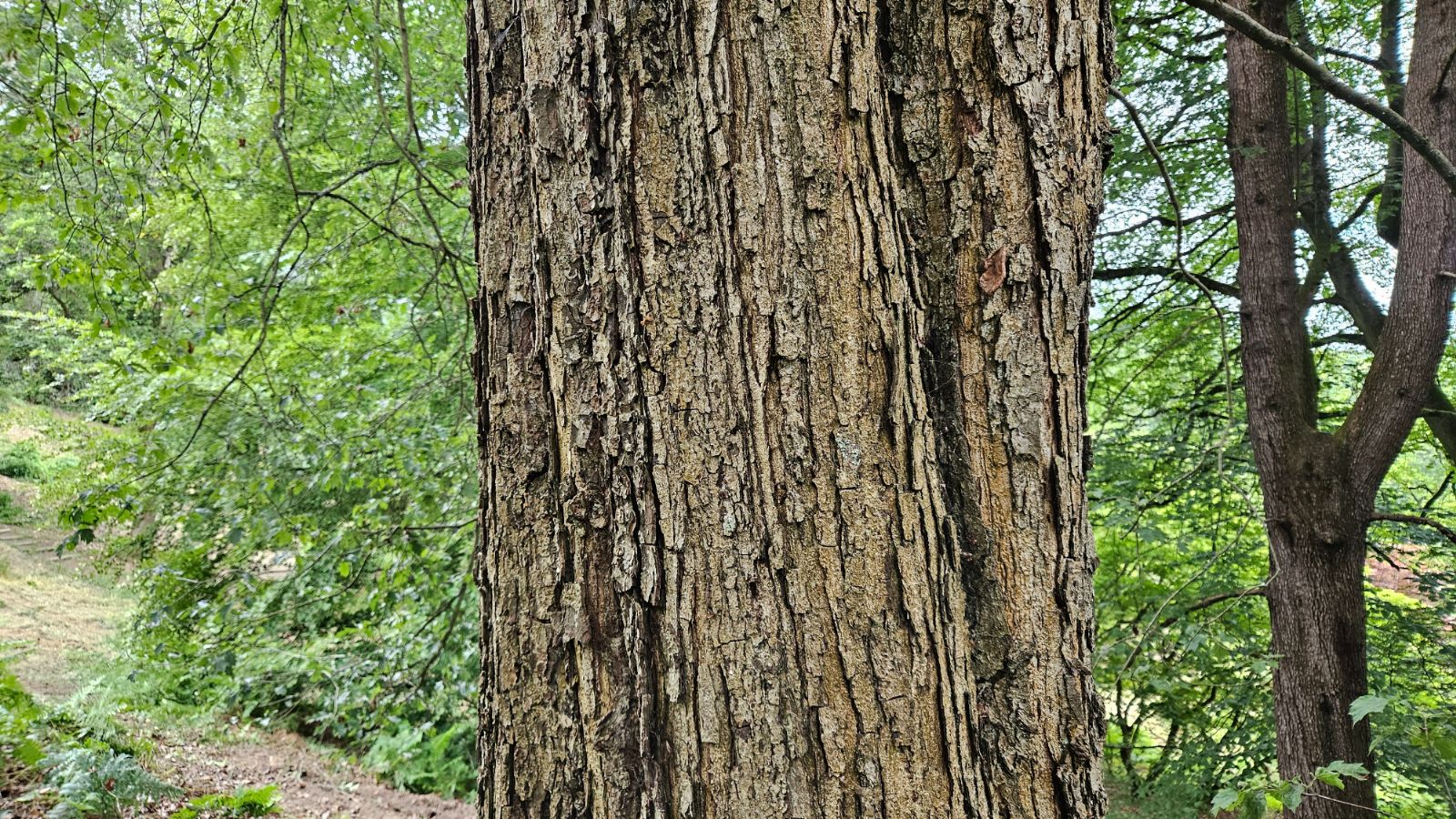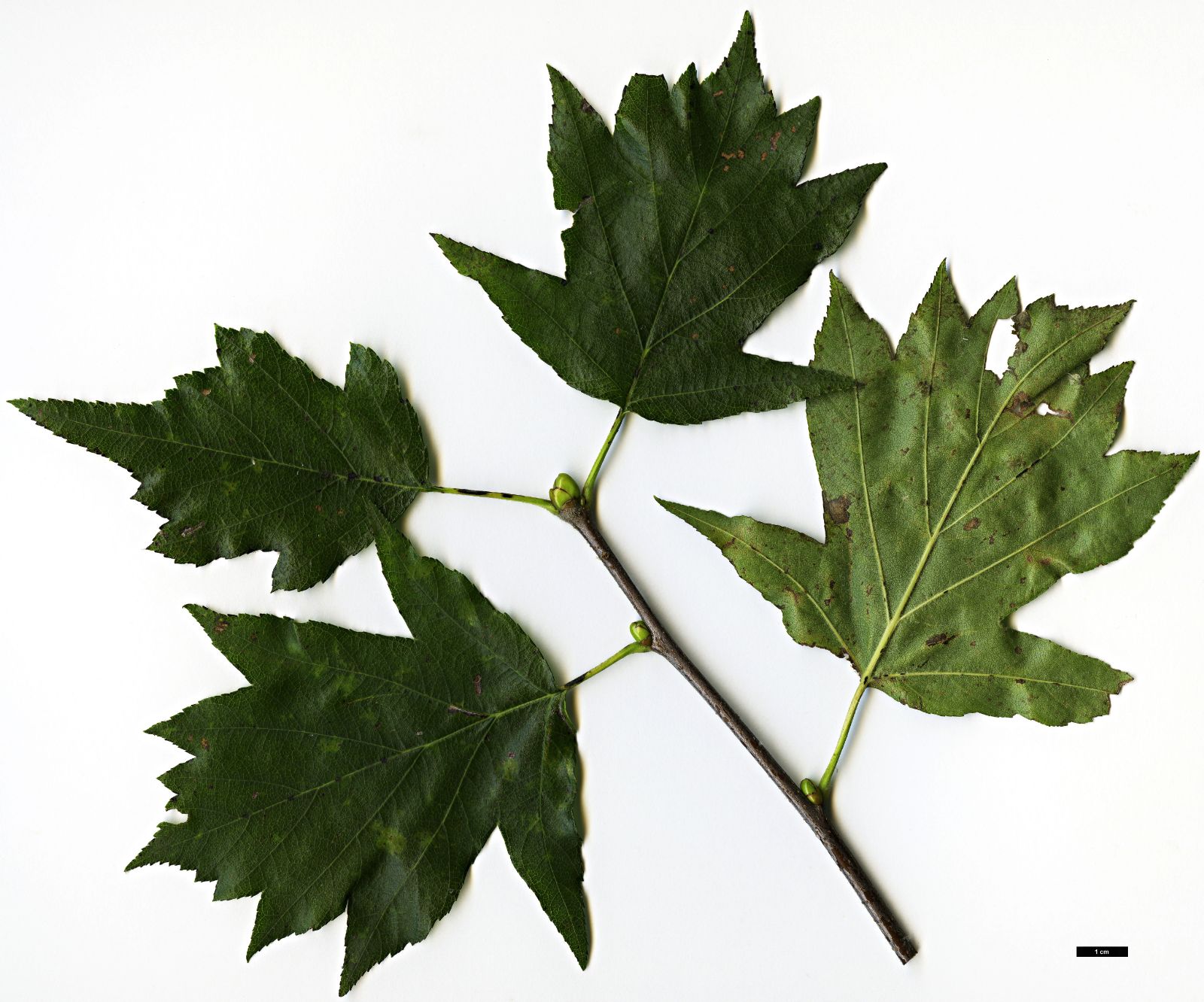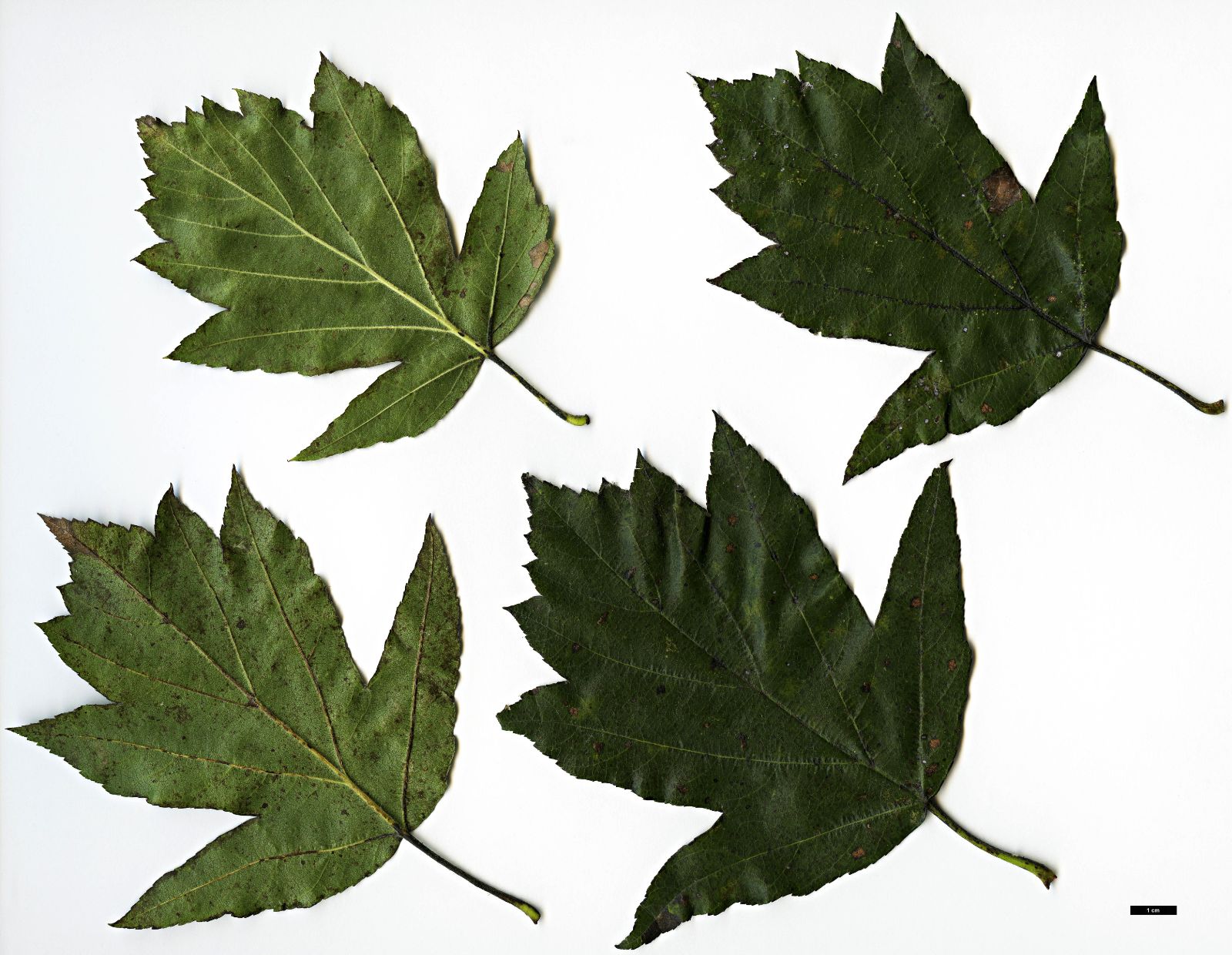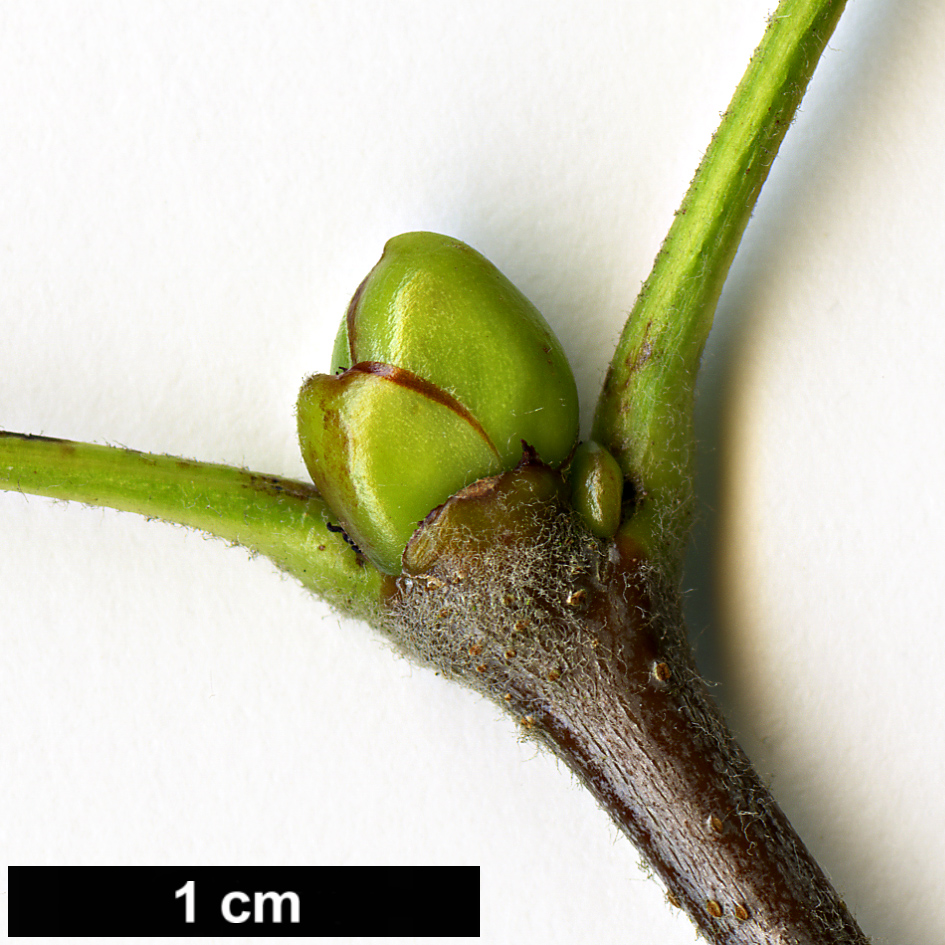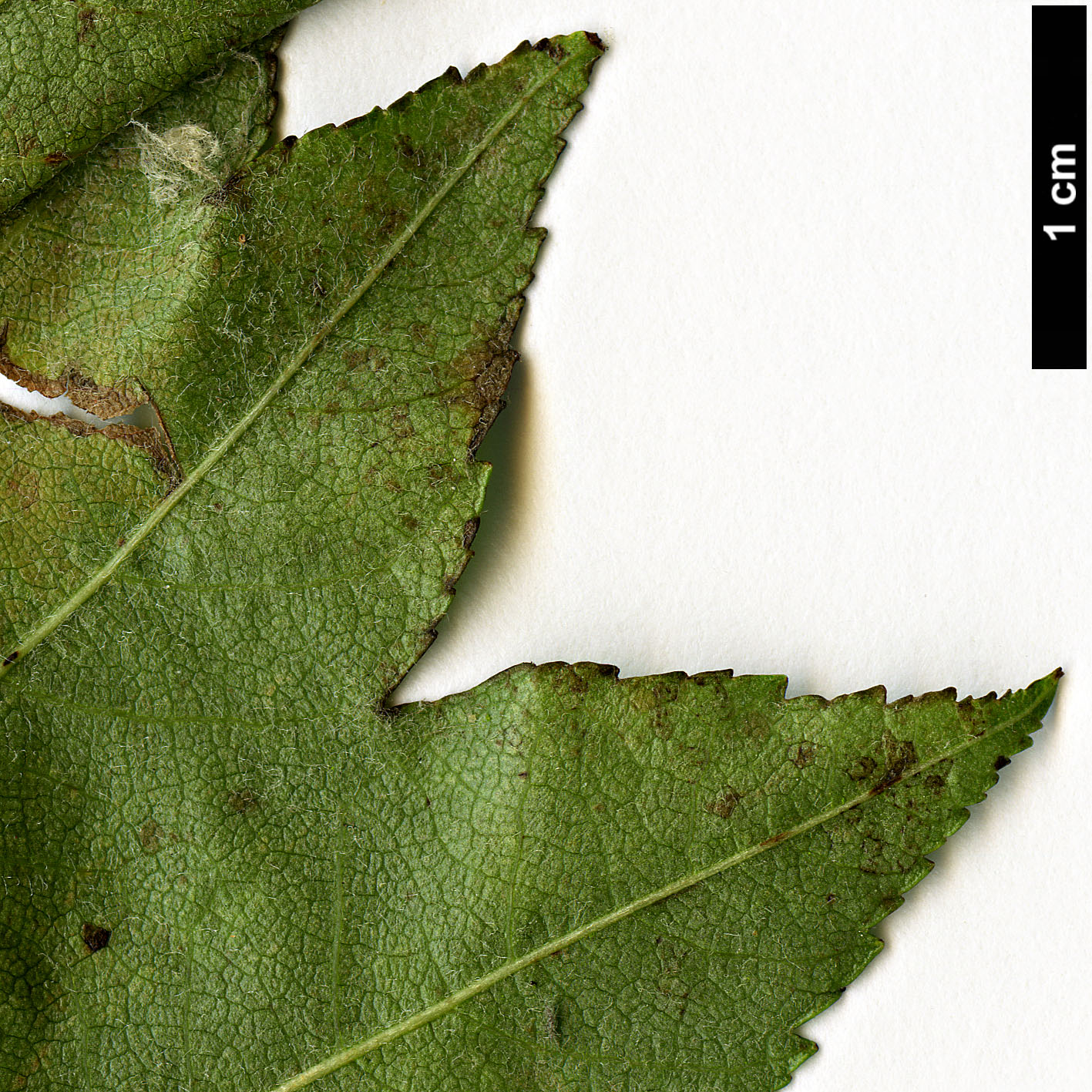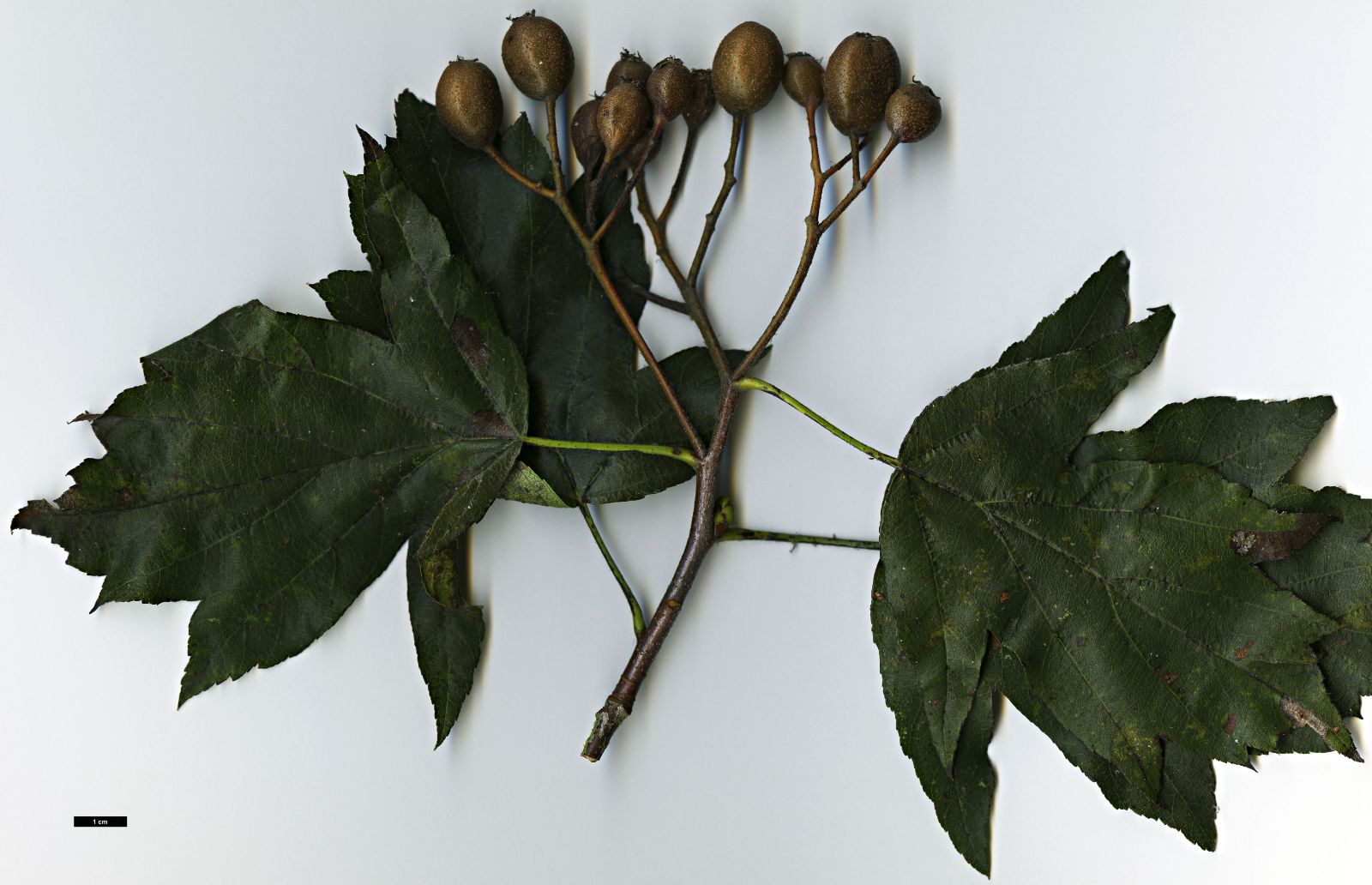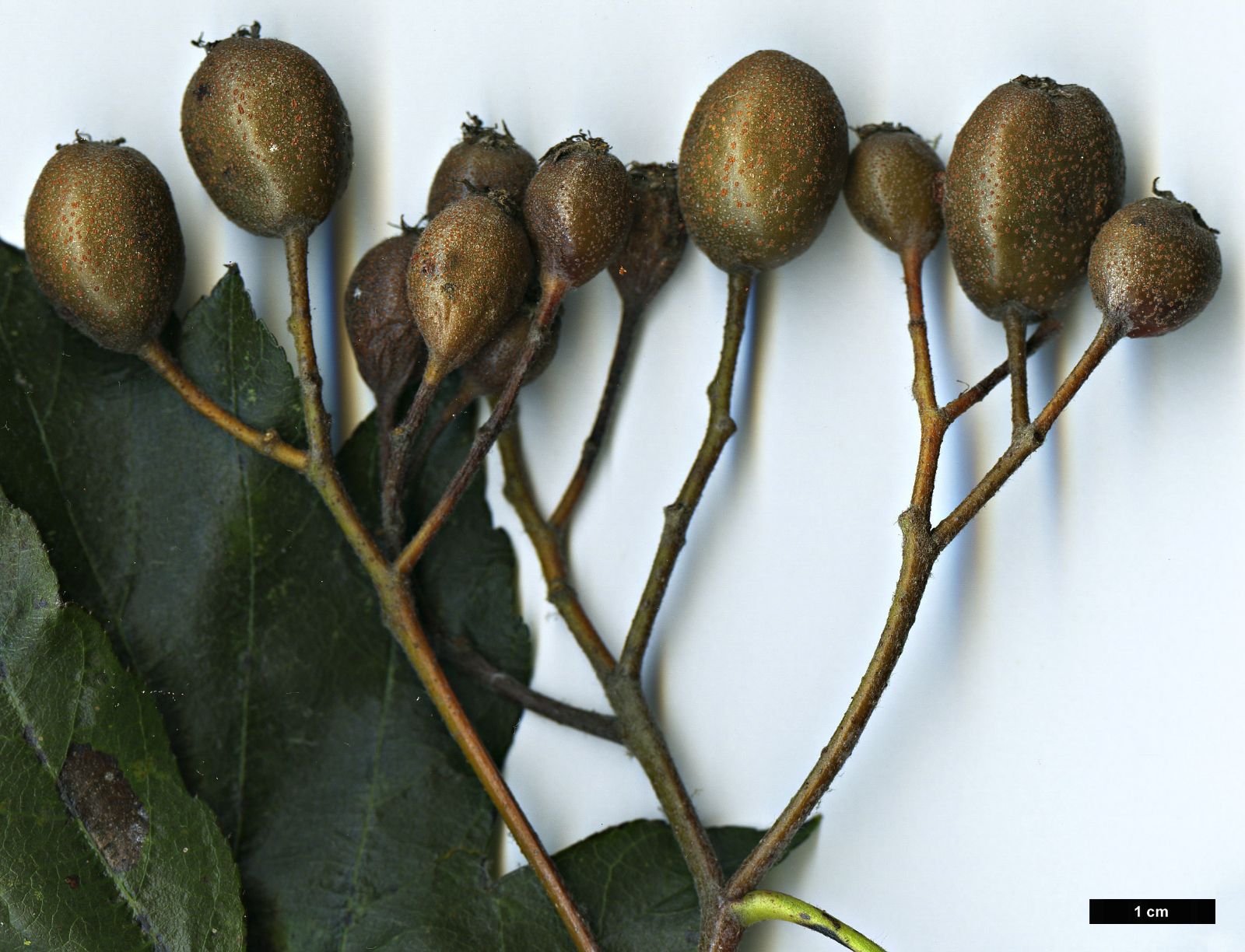Torminalis glaberrima
Credits
Article from Bean's Trees and Shrubs Hardy in the British Isles
Recommended citation
'Torminalis glaberrima' from the website Trees and Shrubs Online (treesandshrubsonline.
Genus
Common Names
- Wild Service Tree
Synonyms
- Crataegus torminalis L.
- Pyrus torminalis (L.) Ehrh.
- Sorbus torminalis (L.) Crantz
- Torminalis clusii K.R.Robertson & J.B.Phipps
Other taxa in genus
Editorial Note
The text below is that of Bean (Bean 1981) who discussed this taxon under the name Sorbus torminalis. We have created this hybrid article – Bean’s text under the correct modern name, with appropriate synonymy – whilst we await sponsorship to enable a full revision of this genus to be written. We are re-organising the Sorbus sensu lato articles in this way to enable a new revision of Sorbus sensu stricto to commence in 2023, and to bring the nomenclature of this complex group of plants up to date in line with modern treatments.
TC, August 2023.
A tree from 30 to 40 ft high as a rule, but occasionally 60 to 70 ft, with a trunk girthing over 5 ft, branchlets covered at first with a loose floss, but soon quite glabrous and shining. Leaves 21⁄2 to 5 in. long, nearly or quite as wide, of a broadly ovate or triangular outline, divided half-way to the midrib into three to five pointed lobes on each side, margins doubly-toothed, upper surface glabrous and lustrous dark green, lower surface paler and at first downy, afterwards glabrous; stalk 1 to 2 in long. Flowers white, 1⁄2 in. across; produced during June in rather lax corymbs 3 or 4 in. across; calyx and flower-stalks very woolly. Styles two, united in the lower part. Fruit oval or roundish, 1⁄2 in. long, brownish.
A native of Europe, North Africa and southwest Asia, occurring in England from Westmorland southward, but locally and never in large stands. It is rare in cultivation, yet few trees of its size are more striking, its leaves being large, boldly cut, and of a healthy polished green, turning crimson or yellow in autumn. The flowers are not very pure white, but attractive when seen in the mass. The fruits when bletted after the fashion of medlars have a similar flavour, but are not to be recommended. In southeast England they are known as ‘chequers’. S. torminalis should be raised from seeds, and will grow in any soil that is not too poor or acid, but attains its largest dimensions on clay or loam.
The largest examples recorded in recent years are: White Beeches Wood, Chiddingfold, Surrey, 75 × 63⁄4 ft and 65 × 83⁄4 ft (1968); Yattenden Court, Berks, 63 × 111⁄4 ft (1968).
In the southeastern part of its range S. torminalis is more variable than in Britain. The leaves may be more deeply cut than in our trees, sometimes almost to the midrib, or at the other extreme, only shallowly lobed. They may also be more hairy on the undersides.
From the Supplement (Vol. V)
specimens: Markshall, Essex, 65 × 81⁄4 ft, bole 25 ft (1984); Linton Park, Kent, 75 × 7 ft (1984); Hall Place, Kent, 85 × 121⁄2 ft (1984); Parsonage Farm, Udimore, Sussex, 65 × 133⁄4 ft (1984); Moor Farm, Cowdray, Sussex, 70 × 9 ft (1982); Gatton Manor, Surrey, 87 × 71⁄2 ft (1977).
var. caucasica Diapulis S. orientalis Schönbeck-Temesy; S. torminalis var. orientalis (Schönbeck-Temesy) Gabrielian – Leaves only slightly lobed. Fruits smaller. A native of Asia Minor, the Caucasus and northern Iran. It is in cultivation at Kew from Fliegner and Simmons 419, introduced by means of seedlings collected from under a tree about 65 ft high, growing in the Elburz mountains of Iran, in 1977.

